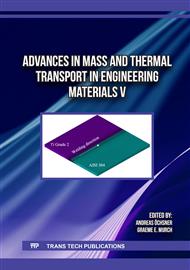p.189
p.209
p.221
p.233
p.243
p.263
p.273
p.283
p.291
Performance Characterization of Cascade Mr-Joule-Thomson Refrigeration System Based on Refrigerant Charge Level
Abstract:
Demands for ultra-low temperature refrigeration systems have been increasing in various fields such as recent LNG (Liquefied Natural Gas) ship BOG (Boil-off Gas) re-liquefaction processes. For the criteria of LNG tankers, the system is essential for mitigating the pressure increase of LNG storage tanks due to BOG. Therefore, this paper optimized the refrigerant charge level of an ultra-low temperature refrigeration system using the Cascade MR-Joule-Thomson. The novelty of this study stems from introducing the dimensionless number called Charge level to optimize the refrigerant charge amount of ultra-low temperature refrigerators using the Cascade MR-Joule-Thomson refrigeration cycle. Experimental results showed that as the refrigerant charge amount increased, the absolute amount of refrigerant within the limited volume increased, leading to an increase in both the suction and discharge pressures of the system. Additionally, the cooling capacity also showed an increasing trend. In contrast, the discharge temperature and cooling time exhibited a decreasing trend. Based on these results, the optimal refrigerant charge amount was determined.
Info:
Periodical:
Pages:
273-282
Citation:
Online since:
February 2025
Authors:
Price:
Сopyright:
© 2025 Trans Tech Publications Ltd. All Rights Reserved
Share:
Citation:


